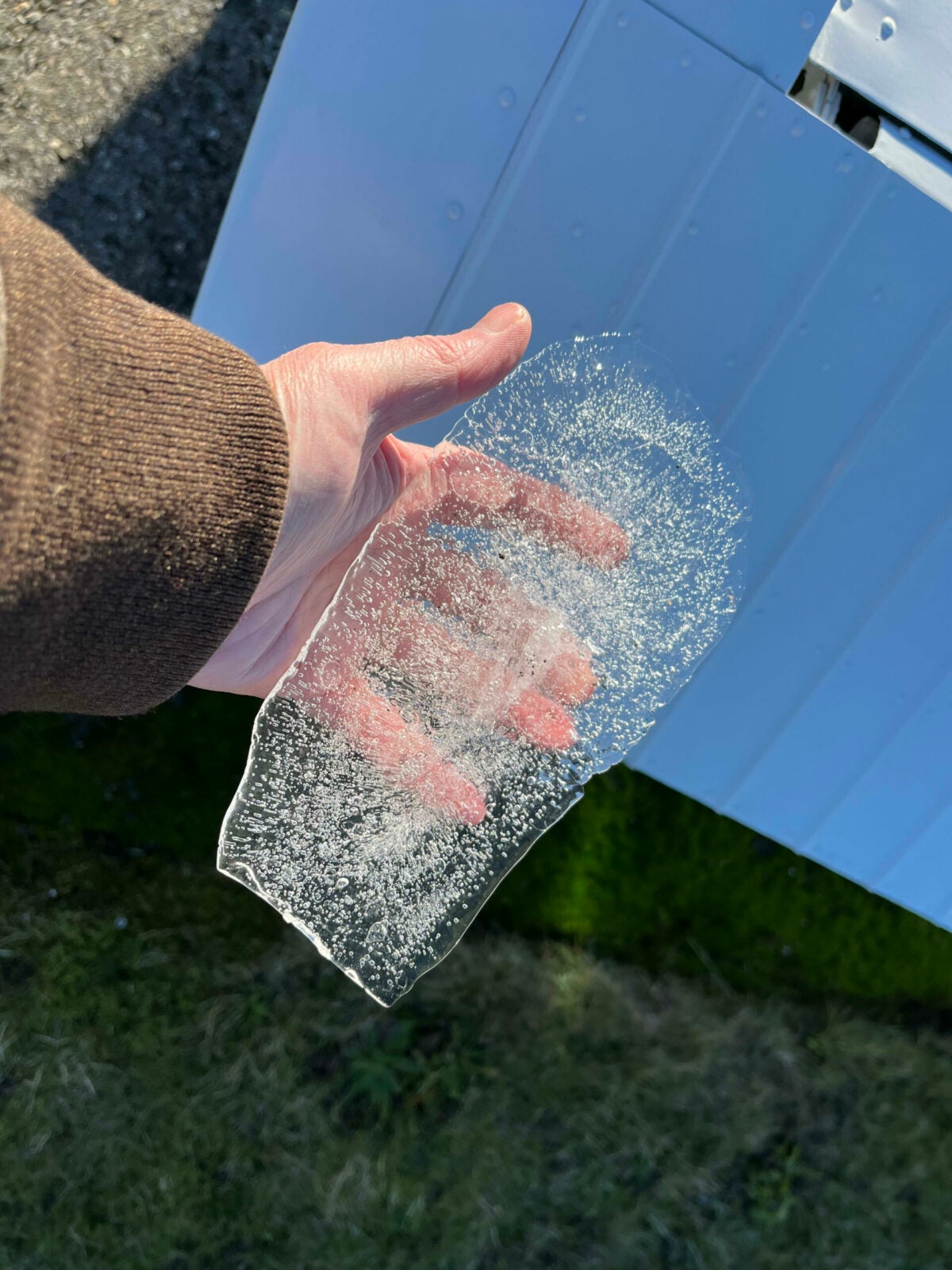Does this sound familiar? You just spent a bundle on that new-to-you airplane and, unfortunately, there aren’t any hangars at your airport, so it looks like your bird will be on the ramp and at the mercy of Mother Nature through the winter.
It’s time to think about a way to protect your airplane with a cover.
Don’t Go Cheap
You’ve probably heard the joke that copper wire was invented when two pilots found the same penny. We are, by nature, frugal since flying as a hobby costs quite a bit, inspiring some aircraft owners to cut corners with $500 buddy annuals, deferred maintenance, and jerry-rigged aircraft covers made from blue vinyl tarps and bungee cords.
While this relatively low-cost solution is somewhat easy to implement and better than nothing, it is often not in the best interest of the airplane because the tarps don’t easily conform to its shape. If the breeze gets under a tarp, it can slap against the aircraft, resulting in scratched paint and windows. Also, tarps don’t interface well with antennae.
Covers Made for Aircraft
Pilot shops often carry canopy covers for both low- and high-wing aircraft. These are usually made of fabric lined with microfiber on the inside and water-repellent fabric on the outside. Held in place with adjustable straps and plastic buckles, they can cost as little as $300 and head north from there, depending on what you purchase and the extras, such as having the aircraft registration number emblazoned on them. Some covers come with a storage bag to hold them when not in use.
Sporty’s Pilot Shop offers several models of covers for both designs. The low-wing canopy covers have a shock cord enclosed in the hem to help keep it tight against the airplane. If wind gets under the cover, that means rain and snow can get under it too, making it next to useless.
The high-wing canopy covers have a wraparound style that covers the windshield, side, and rear window area. It is a one-piece design that secures with Velcro.
Most covers are designed to prevent water intrusion. This is often detected by the presence of wet carpeting or condensation on the instruments, then you have to determine where it is getting in. There is some experimentation involved. Other covers are designed to protect the aircraft from the unrelenting sun.
“Climate dictates the cover you need,” said Bruce Perch from Bruce’s Custom Covers, based in Morgan Hill, California. Perch’s line ranges from dust covers and cowl plugs to full aircraft covers, with nearly 15,000 products out in the world.
“I know it’s hard to believe that so many products could be available just to cover and protect airplanes, but it’s true,” Perch said. “The amazing thing to me, though, is that we’re still coming up with new designs to satisfy our customers’ requirements worldwide.”
Most covers begin with fabric, according to Perch.
“Almost all are synthetics,” he said. “Some polyester, some acrylic, some nylon, some vinyl. Depends on the end use, material performance under conditions, and customer preference. The largest volume of the material we use is produced just for us. Over the years, we have developed several laminated materials, either fabric or film, that are designed specifically for aircraft protection.”
In the winter months, Perch’s business produces a lot of insulated engine covers. When paired with a heat source, like an engine block heater, a properly fitted engine cover is “extremely effective in preserving the engine in cold conditions,” he said. “… We also produce covers for hail protection. You’re probably aware of this: A serious hail storm can completely total a plane in minutes. We can protect against that.”
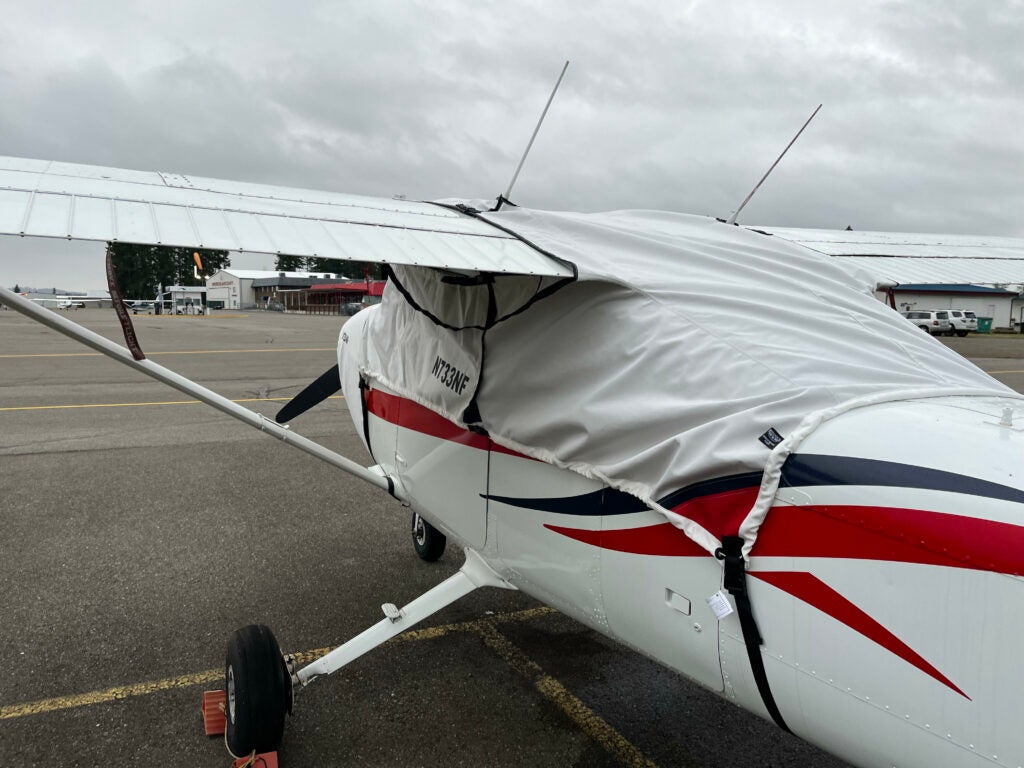
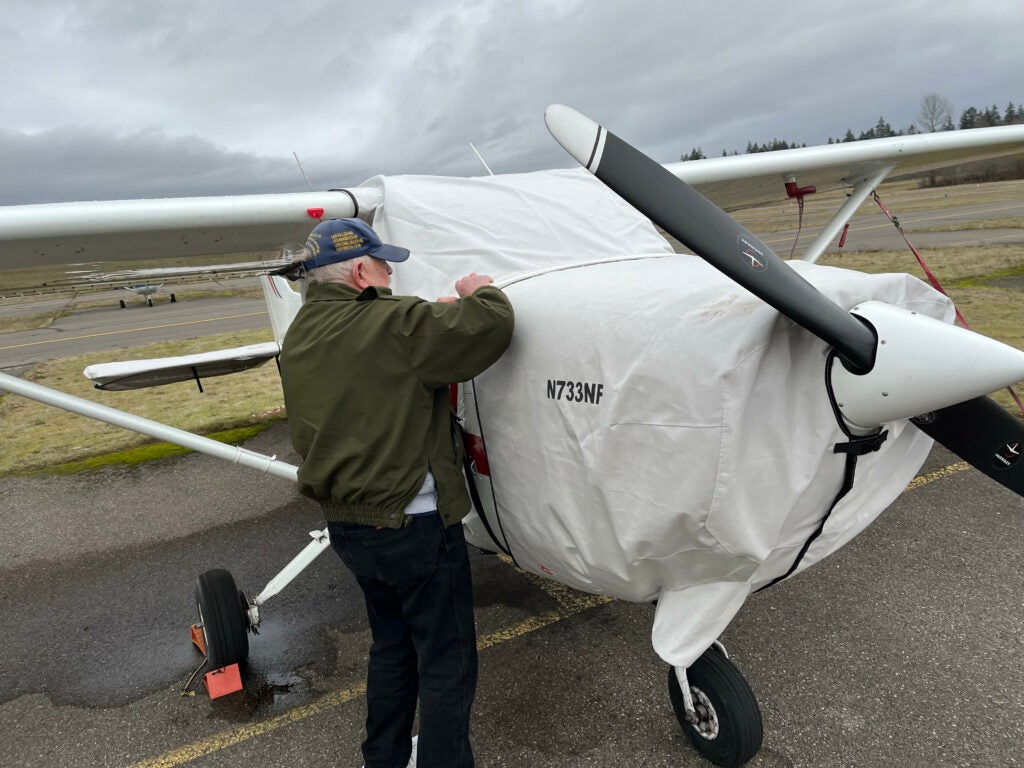
Getting a Good Fit
Finding the right cover for your aircraft begins with type. Since the details such as antennae and probes can vary from frame to frame, the company supplies customers with specific forms they can use and instructions on how to take measurements. If someone is having an issue, a telephone call to the shop can be placed and step-by-step instructions will be provided.
Jack Schoch is one of those aircraft owners who, after a weather challenge, decided it was time to buy covers. Full disclosure: I fly with Schoch on a regular basis. Since 2018, he has been the proud owner of N733NF, a 1976 Cessna 172N he named Babe in honor of his late wife.
The aircraft is kept on the ramp at Pierce County Airport-Thun Field (KPLU), some 21 nm south of Seattle-Tacoma International Airport (KSEA). The nontowered airport features several flight schools and a robust general aviation community. Hangar space is at a premium, and there is a waitlist for the waitlist.
“For four winters she sat outside, and I didn’t have any covers,” Schoch said. When he found water inside the aircraft, he went on leak safari and installed Dri-Z-Air dehumidifiers, although they are not recommended as they contain salt, and that can lead to corrosion if the salt water spills, yet many pilots use them anyway.
Schoch has four units in his aircraft in spill-proof saucers that he very carefully removes before each flight. He dumps the water before replacing the units.
“I have a total of five of the pots, two up front, two in the passenger area, and one in the baggage compartment,” he said. “Some folks have said that’s too many, but she’s my bird.”
Schoch decided on the full package from Bruce’s Custom Covers—wing covers, canopy cover, engine cover, and air vent plugs. Although we don’t get much snow in this part of Washington state (not much by East Coast or Midwest standards anyway), we do get a fair amount of rain. Thus far, the covers have kept the aircraft dry.
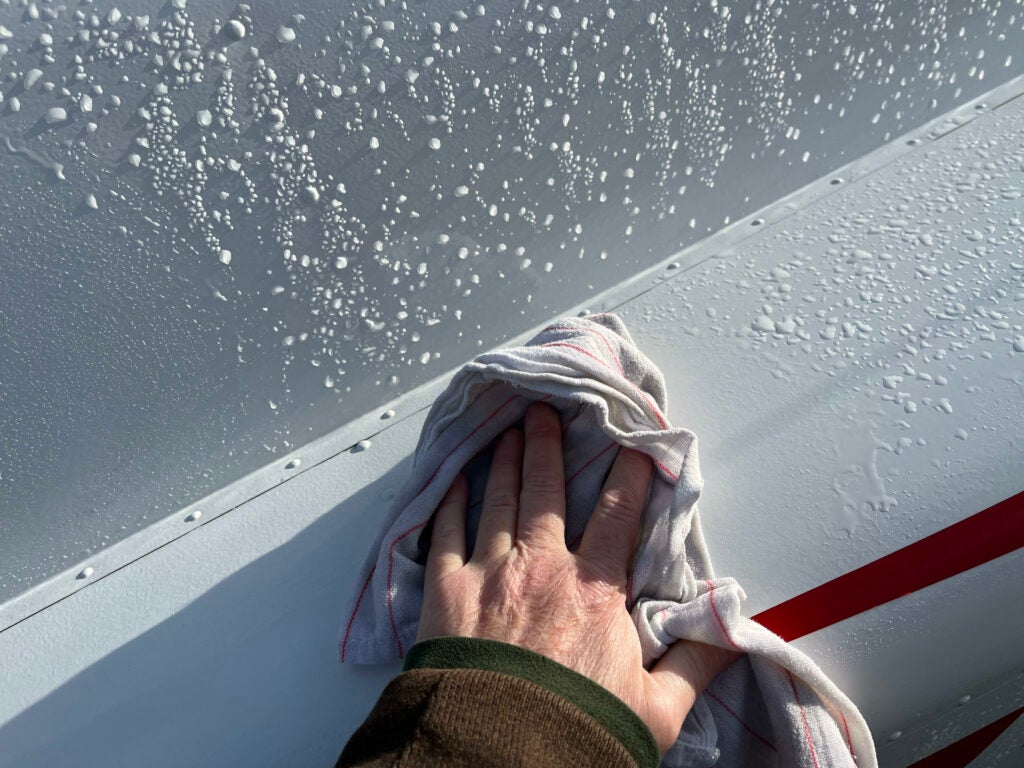
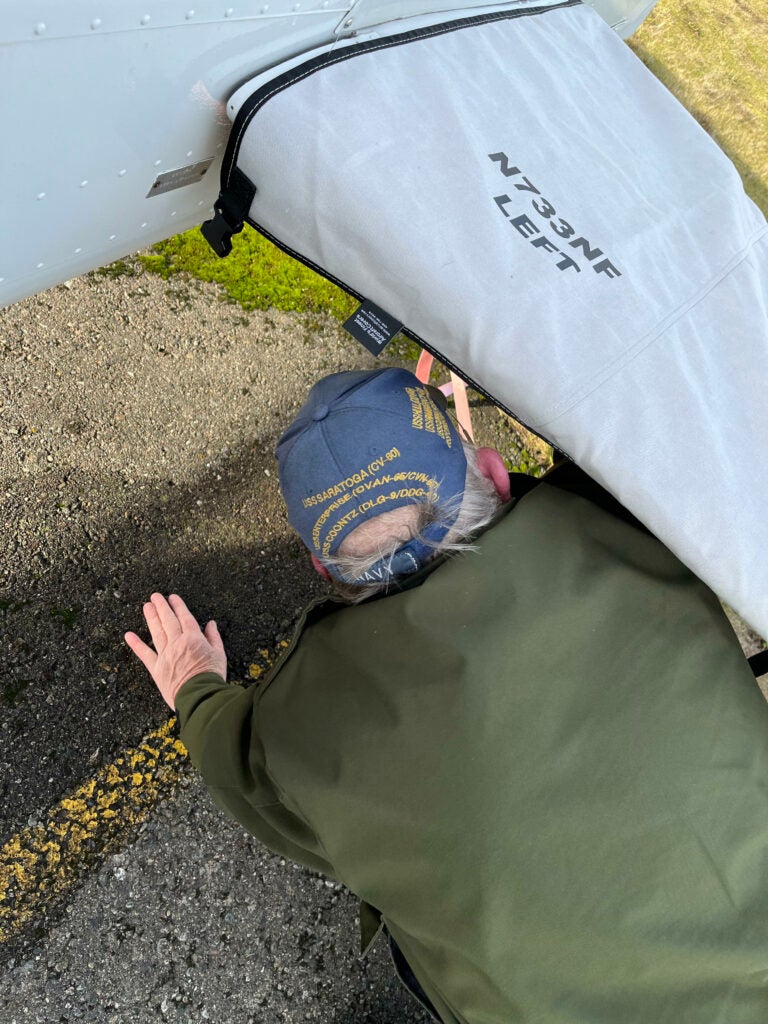
Put It On, Take It Off
The first time you install the covers there will be a bit of a learning curve—especially right out of the box. I helped Schoch when he first installed the covers on Babe. It was not my first aircraft cover encounter, and it took two of us and a stepladder to do it the first time, in part because it was windy and cold. It was difficult to get the covers over the top of the airplane (that is where the stepladder came in), because Mother Nature was fighting us, and our hands were going numb. We covered the aircraft, took the covers off, then recovered it again to make sure learning took place.
“Covers are color coded or graphically marked to help users figure out which way is forward,” said Perch.
Perch refers customers to the company website (www.aircraftcovers.com) where there are more than 10,000 photos of most of its covers installed. Pro tip: You can also cheat by writing notes on the underside of the cover with a laundry marker, like “Nose,” “Left Side,” etc.
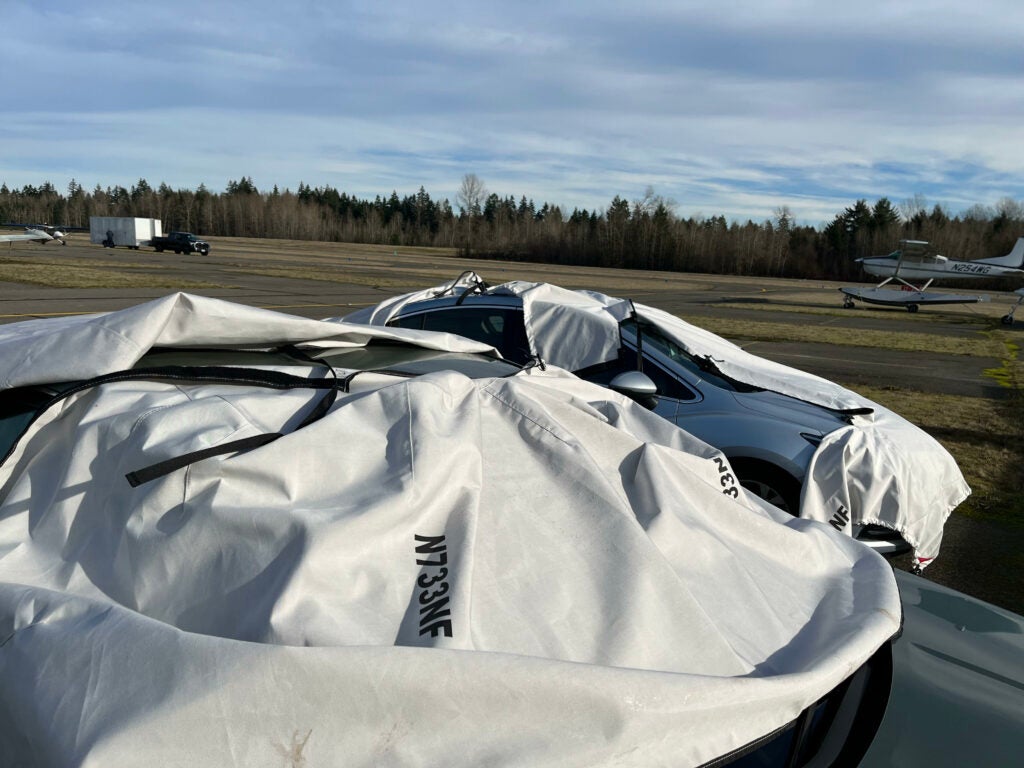
More than Covers
According to Perch, his company sports more than 20,000 specific aircraft protection products—and that number continues to grow.
“For the 172, for example, I currently offer 67 products as shown on our website, with dozens more specialty items for that aircraft that are not published,” he said. “As for how many aircraft models we have designed for, that number is over 1,200 right now, and it includes the oldest aircraft flying to the newest designs, including spacecraft and drones.”
